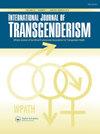跨性别人群中焦虑症状和障碍的患病率:文献的系统回顾
Q1 Social Sciences
引用次数: 108
摘要
摘要:焦虑症是普通人群中最常见的精神疾病,在美国占18%(12个月患病率),在欧洲占13.6%(终生患病率)。几项研究也描述了跨性别人群中焦虑障碍和焦虑症状的高发率。然而,结果有很大的差异(特别是与性别患病率有关),很少有研究描述跨性别人群特有的焦虑症类型。目的:收集和批判性地评价现有研究中描述焦虑障碍和症状患病率的信息。结果:共发现25项横断面研究(n = 17)和纵向研究(n = 8)。横断面研究描述了跨性别人群中焦虑症状的患病率高于顺性别人群。焦虑症的患病率从17%到68%不等。最常见的焦虑症是特定恐惧症、社交恐惧症、恐慌症和强迫症。大多数大型研究表明,与跨性别女性相比,跨性别男性的焦虑症状和障碍水平更高;然而,在结果中发现了相当大的差异。结论:研究结果表明,在参加跨性别健康服务的跨性别人群中,焦虑障碍和症状存在相当大的差异。这些发现可能是由于所使用的工具,缺乏匹配的对照,以及研究群体缺乏同质性的结果。总的来说,这篇综述表明,主要(但不完全)在开始变性激素治疗之前,在接受性别服务的跨性别者中,焦虑症状和障碍水平很高。与社交互动相关的焦虑障碍(如社交焦虑)和恐慌发作似乎特别常见,但需要更严格的研究来证实这些发现。本文章由计算机程序翻译,如有差异,请以英文原文为准。
Prevalence of anxiety symptoms and disorders in the transgender population: A systematic review of the literature
ABSTRACT Introduction: Anxiety disorders are the most common mental illness in the general population, affecting 18% of the population in the United States (12 months prevalence) and 13.6% in Europe (life time prevalence). Several studies have also described high rates of anxiety disorders and symptoms of anxiety among the transgender population. There is, however, a great variation of results (particularly related to gender prevalence), and few studies have described the type of anxiety disorders specific to the transgender population. Aim: To collect and critically appraise the information from the available studies describing prevalence rates of anxiety disorders and symptoms. Results: A total of 25 cross-sectional (n = 17) and longitudinal (n = 8) studies were found. Cross-sectional studies described higher prevalence rates of anxiety symptoms in the transgender group than in the cis population. The prevalence of anxiety disorders range from 17% to 68%. The most common anxiety disorders found were specific phobias, social phobias, panic disorders, and obsessive-compulsive disorders. Most of the large studies suggest higher levels of anxiety symptoms and disorders in transgender men compared with transgender women; however, considerable variation in results was found. Conclusions: The findings identified that there is considerable variation in anxiety disorders and symptoms among transgender people attending transgender health services. These findings are likely to be the result of the tools used, the lack of matching controls, and the lack of homogeneity of the group studied. Overall this review indicates high levels of anxiety symptoms and disorders among transgender people attending gender services, primarily (but not exclusively) before commencement of cross-sex hormone treatment. Anxiety disorders related to social interaction (such as social anxiety) and panic attack appear to be particularly common, however more rigorous studies to confirm those findings are needed.
求助全文
通过发布文献求助,成功后即可免费获取论文全文。
去求助
来源期刊

International Journal of Transgenderism
Social Sciences-Gender Studies
CiteScore
5.10
自引率
0.00%
发文量
0
期刊介绍:
International Journal of Transgenderism, together with its partner organization the World Professional Association for Transgender Health (WPATH), offers an international, multidisciplinary scholarly forum for publication in the field of transgender health in its broadest sense for academics, practitioners, policy makers, and the general population.
The journal welcomes contributions from a range of disciplines, such as:
Endocrinology
Surgery
Obstetrics and Gynaecology
Psychiatry
Psychology
Speech and language therapy
Sexual medicine
Sexology
Family therapy
Public health
Sociology
Counselling
Law
Medical ethics.
 求助内容:
求助内容: 应助结果提醒方式:
应助结果提醒方式:


